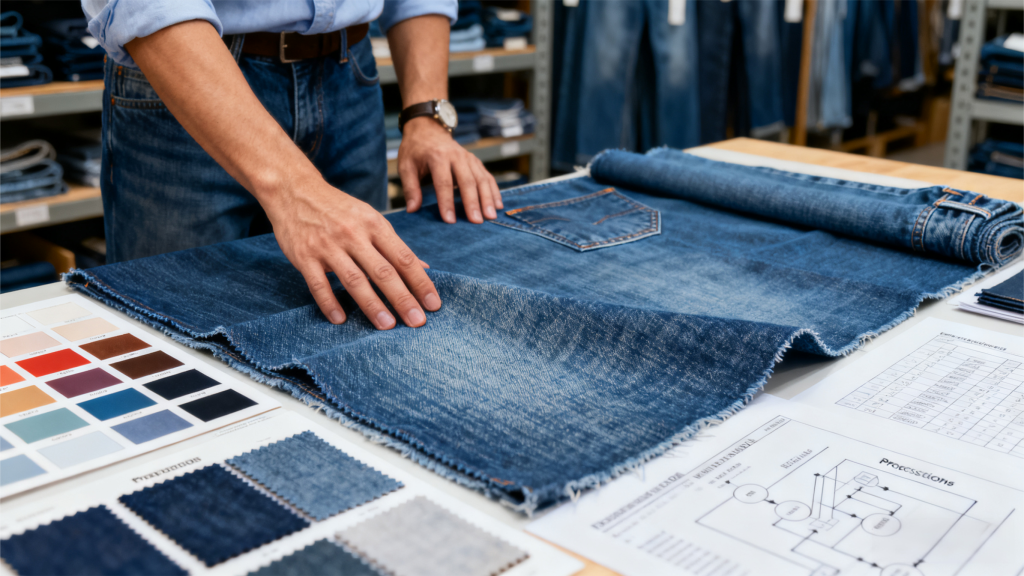
Sourcing your denim Fabrics is just one part of the process of creating your high-quality denim jeans. In addition to creating your pattern and gathering all your supplies including hardware, and sewing them all up to your satisfaction, there are many steps to creating your jeans. Denim designers thoroughly understand this procedure, how it can become.
Jeans have a long history beginning with the Gold Rush era and going all the way to modern day. They have changed very minimally throughout all these years, through fit and style. Denim started being blended with lycra in the 70’s which created a stretch style. Depending on if you like the look and feel of a stretch material will dictate which kind of textiles you purchase for your projects. All denim will eventually stretch over time. The twill weave in the jeans fabric relaxes with wear and creates that bit of stretch we all experience while wearing jeans.
A stretch denim gives more comfort for the wearer. High-quality denim fabric can help reduce the amount of stretching, and where you source your jeans fabric from is crucial. With better quality fabric, the fabric will have better fabric recovery and will not stretch more with time.

These days, mills are offering almost endless selections of denim fabrics. Focusing on the outcome sets limits and helps denim designers select the right jeans fabrics. They need to keep an eye on the features of the denim fabric and what’s possible to do with it in the stitching and laundry processes. And because not all jeans fabrics work with all wash process, selecting denim fabrics is the first step. So, what do denim designers look for. Denim designers check the weight, the weave, the indigo colour and the grain line (the warp).
Usually, a trial wash is made with the selected jeans fabric to ensure that the cast and optics turn out as expected. Denim designers might also base their decision on how sustainable a specific denim fabric is, and for instance, go with options made with recycled yarns.
Another important aspect to consider when selecting fabrics is whether the same fabric can be used for more than one style.
The goal for forward-thinking denim designers is to do more with less and achieve multiple looks with just one denim fabric. this approach calls “fashion flexible”.
Denim designers usually select narrow range in qualities and deep indigo colour in finishing. This will help the factory job easier and will allow them to hit the minimum order quantity easier.

A key benefit of this approach is that it minimises production complexities. It also enables designers to get better denim at a lower cost. And it helps with pre-booking of denim fabrics.
From an environmental perspective, using fewer jeans fabrics can help limit the waste mills produce when they develop new ones. While the denim fabric is the key ingredient, designers also need to think about what kind of trim will match the style of the jeans they’re making, as well as how the garment fades.

The sourcing stage is also where denim designers select suppliers and factories. Especially when starting with new suppliers, it’s important to know the limitations of the facilities. What kind of machinery do they have? Which operations are manual, and which are automated? What’s the seam allowance, which you need to know to make a pattern? How to they set pockets? What kind of pattern templates do they have? Do the accessory machines work with the selected trim? And so on.
All the decisions a denim designer makes in the research and sourcing stage have a profound impact on the jeans that end up on the shelves in retail and success for the jeans brand.
